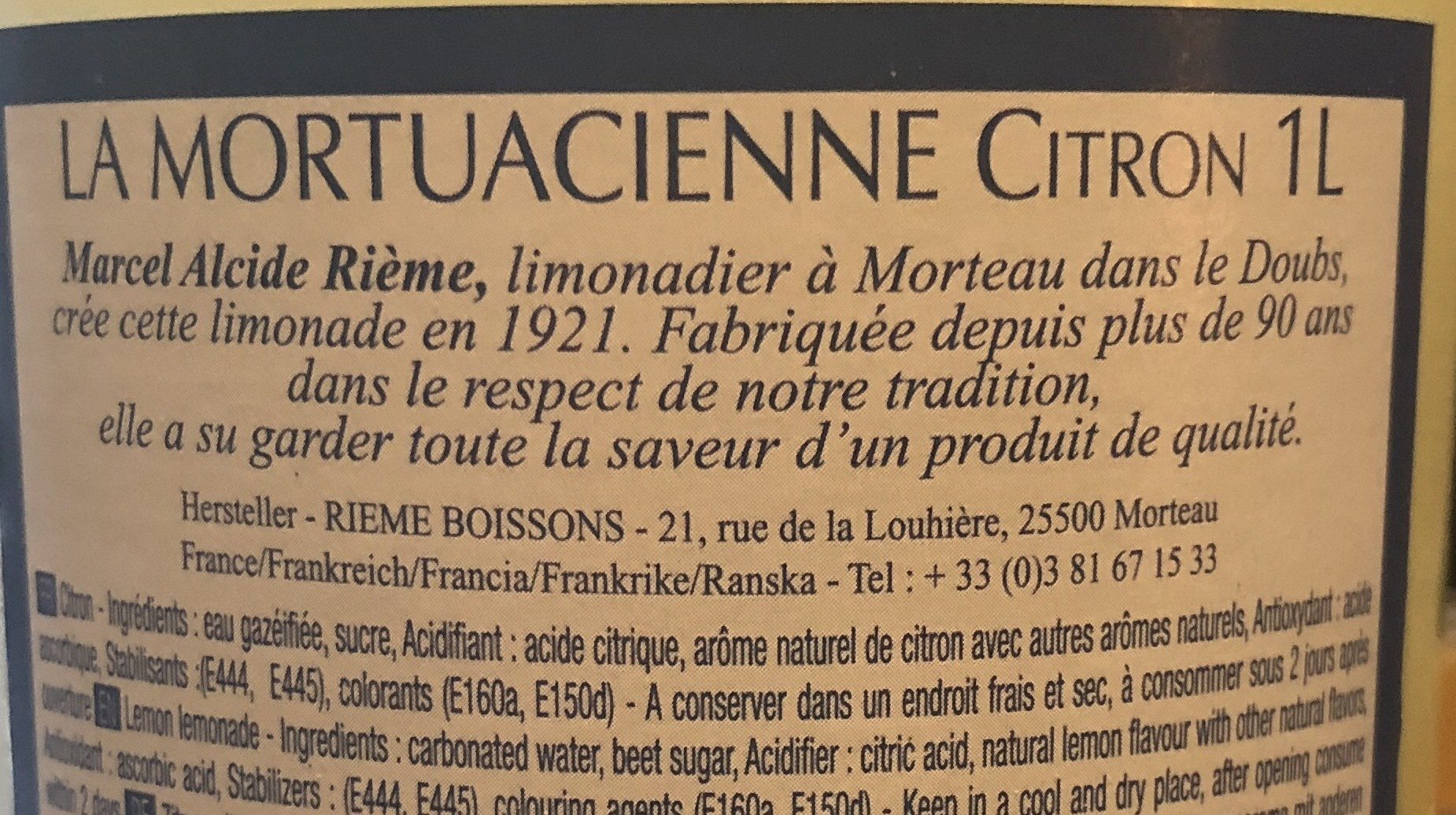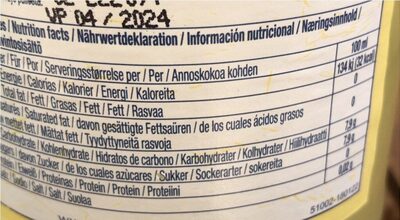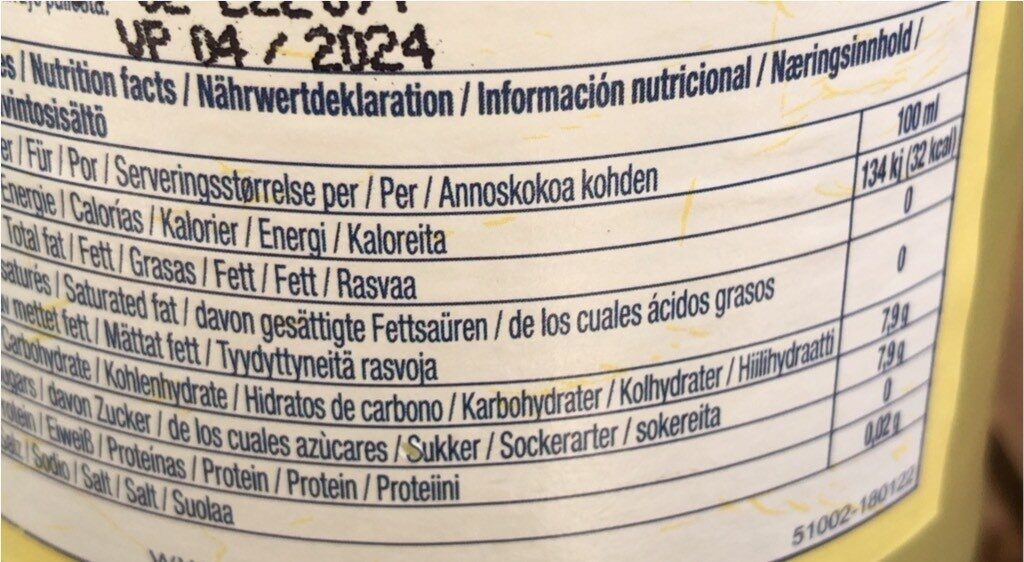La Mortuacienne Citron - REINE DES LIMONADES - 1 l
This product page is not complete. You can help to complete it by editing it and adding more data from the photos we have, or by taking more photos using the app for Android or iPhone/iPad. Thank you!
×
Barcode: 3292482220015 (EAN / EAN-13)
Common name: Limonade artisanale aux arômes naturels de citron
Quantity: 1 l
Packaging: Glass, Bottle, Bottle cap, Wine cork
Brands: REINE DES LIMONADES
Categories: Plant-based foods and beverages, Beverages, Plant-based beverages, Carbonated drinks, Fruit-based beverages, Sodas, Fruit sodas, Lemon soft drinks, Lemonade, Sweetened beverages
Origin of ingredients: France, fr:Morteau
Link to the product page on the official site of the producer: http://www.rieme-boissons.fr/cat-mortuac...
Stores: Caviste
Countries where sold: France
Matching with your preferences
Environment
Packaging
Transportation
Report a problem
Data sources
Product added on by stephane
Last edit of product page on by kiliweb.
Product page also edited by guill01, openfoodfacts-contributors, packbot, quechoisir, tacite, tulipe, yuka.FKpiF9qmQdI7G_rswKMLhhWEO8bMKvUFOXIEog, yuka.Hep7YNmVMJcZF_GK96YO-TaGCd_4X9hYSCArog, yuka.JIB9B4-yP8I-QfrRwbMb4TyFTb-wCPR2NnNTow, yuka.KLF7bebXBOkbMMDQ84YE8ga_LP7sMcVHNnQzog, yuka.L7NnPealGuAfN8bY740mg2aETPW7LNp1NiMIoQ, yuka.MZBAP9XbAsgNNsrb1KUS4TWfOsf9Pt9wN1Apog, yuka.MpFmAYCTMucfFcHSjqsWhyGFMrrAHsBIOF0WoQ, yuka.Nbx6LtmoQ9B-TfXr2JIIzju_S7jSDMV1PVwnog, yuka.PYwaFfyVEZM8Nsfszd0QgyKQEOvGO_lQSUwnow, yuka.Rm9rL0Yvc0NwZnBRdU1OangwTG8rc0JFeXFhU1FWNjdLOUJBSVE9PQ, yuka.SHZrOE1yc01xL2tGcE1jbXdTUGwrOHg0NjZLWWNVU09PdnN4SUE9PQ, yuka.Uq5CDOGzBNIvIPDb_qszjGixDbzbHvV8KUYyog, yuka.V-0fZcWhPeh4NvPdir470DO-C-7_D_95O0Qkow, yuka.VpRrO4e0IskrO8XfgYEd9RKgE7npXOBwMm5dow, yuka.WFBFU0ZxY3ptZXNxbS8wdjFUanM4OHQrK1lLcGZGMlRkN0pBSUE9PQ, yuka.XeASZN-KPdUPAsLez4w0-QiDGMfhD8RQAl8Wog, yuka.ZDZNblBaOGRvOTBub1BFejcwTEtvb3BKNFlPcVJVaVljTmMxSVE9PQ, yuka.ZTc0bEdyb0NqZGszdGNZZjhCcjQrK3RTNTdLcFZEKzFOT2NUSVE9PQ, yuka.ZUxnUkg3OGtyOElUb2RzTTd4akZ3czlNOThDalduS1lldmc5SUE9PQ, yuka.sY2b0xO6T85zoF3NwEKvlmpNXPTxnRzoLgbUk3-54M-XApW3RfBI2In1Gas.










